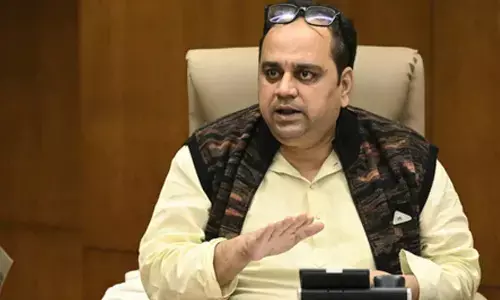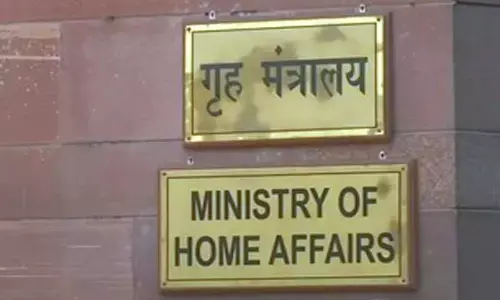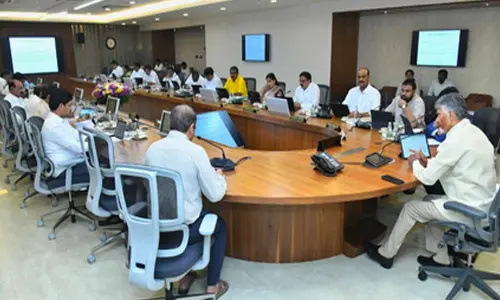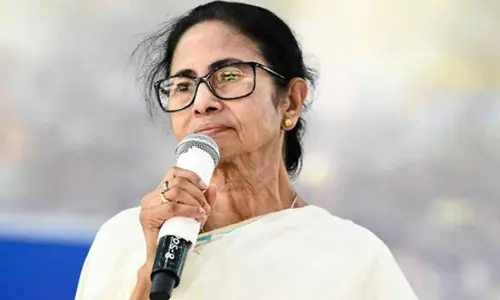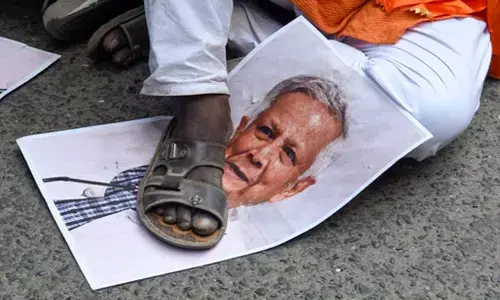Exploring feminine energies

Artist Seema Kohli’s art exhibit in Delhi channels feminine energies in a garden that includes sandstone and bronze sculptures
Seema Kohli's performance and exhibition of sculptures at the historic Sunder Nursery in Delhi is a treat. The exhibition is one of the largest presentations from the artist till date and includes of sandstone and bronze sculptures.
The opening evening featured a narrative performance by Kohli alongside a compilation of her new video works. This marks the first time the artiste presents a large show of sculpture who has amassed an impressive oeuvre over the years, working across painting, drawing, printmaking, sculpture, and performance.
Excerpts:
This marks the first time you will be presenting a large show of sculptural work, tell us about it and what can we expect?
This is the first time, back in 2009 I showed a complete body of works about 12 bronze sculptures at the Lalit Kala but after that I haven't been able to show more than five pieces at solo shows.
I have waited a long time for an exhibition where I can show the sculptures together, in a unique setting. I didn't want to show them in a closed gallery, but rather in a public place; the sculptures and the concept demanded that. have experimented in many mediums, but the concept is the same as 'feminine and Yogini' the energy that makes all things happen.
The works are in sandstone there are matrikas in bronze and one huge Kali sculpture about 12 feet high in Gambhari wood. Most of it was done in Odisha and a part of it was completed in Delhi.
You express your creativity in mediums like painting, drawing, printmaking, sculpture, and performance; which one do you feel most at home with and how important is it for an artiste to be able to work with different mediums?
I have worked in various mediums, but I do think in line. It all starts with the thought, which develops on a paper as a line and an image; not as a sculpture, poetry or performance.
The other forms are all subservient to the image on paper which is dictating and directing me to do whichever medium it inspires. It's important to work in different mediums, just an image which lives on my canvas, it may have its own desires dreams and aspirations… there are times when image is being repeated and inspires creation in another form.
There are times when I have become that image and I have performed. For me this is a completely liberating process. Because I don't feel confined it's a liberating moment.
The Sunder Nursery, makes for the perfect setting, how does it compliment your work?
It's been almost three years since I have been looking for a place to show these works together and I'm lucky to have got Sunder Nursery which is the perfect setting. Because the idea of yoginis or prakrati (nature) is all intertwined in what this space offers me.
The fact that the Lotus pond is also 16th century old, only living Mughal pond is this… one knows wherever yoginis go, there is a water body.
They go to forests and open spaces which are not inhabited with people, so they can do their own krira or khel (experiments and play); I feel they have found space and the Agha Khan Foundation and the other organisations were instrumental in making this happen for me.
As a contemporary chronicler of ancient myths and mythological figures of India, you have explored themes of beauty, sensuality and spirituality. Do you feel as a society we have regressed and become more orthodox than in eras past?
I do feel that in each time or in the present time, whether it was the second, tenth or twenty-first century, we were and are still living in times of aspirations and to face challenges of tomorrow.
There are times even in the 10th century when people must have felt we were so liberated and what's happening to us now. The matriarchal society became the patriarchal one and life keeps changing.
In fact, change is the only change which doesn't change — it's the process of existence. The concept of regression and orthodoxy might have crept in, but there are windows and spaces of liberation.
The world has become a small place and we are all connected, this era is even more challenging and exciting.
So, I believe one should see the positive to see how life is connecting us all. Life and everything is in the constant process of evolvement.
Woman injured in stabbing attack in Tokyo, suspect at large
Bengal cop booked for murder over mysterious death of woman home guard, SIT to probe case
Staffer recalls horror of 7-kg gold robbery by armed gang in Karnataka’s Hunsur
25-Year-Old Airline Cabin Crew Member Dies At Gurugram Party; Police Begin Investigation









